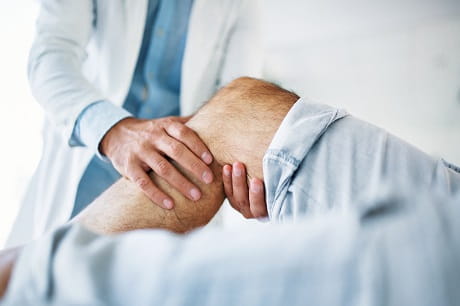The ABCs of an ACL injury
ACL injuries are one of the most common knee injuries athletes suffer from, with about 150,000 occurring in America each year. The good news? After ACL reconstructive surgery, most athletes are able to return to their previous activity level.
ACL stands for anterior cruciate ligament, which is in the center of your knee. It connects your shin bone (the tibia) to your thigh bone (the femur), giving your knee stability. “ACL injuries can occur during sporting events,” says Dr. Shazad Shaikh an orthopaedic sports medicine surgeon from Geisinger Orthopaedics & Sports Medicine in Scranton, “especially when movements such as sudden stops, jumping and landing or changes in direction occur.”
If your ACL tears, you may hear a loud pop or feel a popping sensation in your knee. Symptoms of a torn ACL may include:
- Bruising
- Knee instability
- Knee swelling
- Limping
- Loss of range of motion
- Loud pop or popping sensation in your knee
- Pain
“It’s not recommended to play any type of sport with an ACL tear,” says Dr. Shaikh. “Your ACL is essential for stability for your knee. Without it, twisting or cutting movements will be difficult and can cause more damage to your knee.”
In most cases, surgery is required to treat a torn ACL. After your surgery, you may enter a physical therapy or training program to help you return to your previous activity level.
What is ACL reconstruction surgery?
When ACL reconstruction surgery is required, your surgeon will often perform an arthroscopy. This minimally invasive procedure uses a camera, inserted through a small incision in your knee, that helps guide the surgeon through surgery.
“Minimally invasive surgeries mean faster recovery time for the patient,” says Dr. Shaikh.
In surgery, your torn ligament will be removed and replaced. Your surgeon will attach your new one to your bone. Once your knee heals, you’ll begin treatment such as physical therapy to help return you to your previous activity level.
“One common misconception of ACL reconstructive surgery is that you are at a higher risk of re-tear for your surgically fixed ACL,” says Dr. Shaikh, “but that isn’t true. In fact, you have a higher chance of tearing your other ACL than the one that was reconstructed.”
Rehabilitation after ACL reconstruction can take anywhere from six to twelve months, varying from patient to patient. After surgery, your range of motion will be limited in your knee. You’ll work on this first in physical therapy, and then shift to strengthening exercises. These will continue to progress until you reach your previous activity level.
When it comes to knowing when something is wrong with your ACL, it’s important to listen to your body—don’t push through any pain you’re experiencing on the field. “Always listen to your body – if you’re in pain while playing or practicing, stop and have a trainer or doctor check to see if you’re OK,” says Dr. Shaikh.
Next steps:
Find an orthopaedic specialist
Make an appointment with Shazad Shaikh, MD
Learn more about orthopaedic surgery





